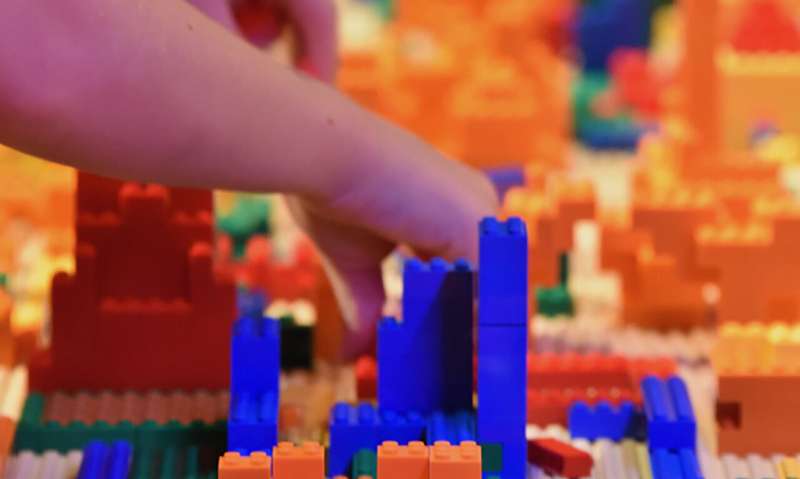Experiment participants contribute to the development of a LEGO artwork. Credit: Sony CSL Paris
A trio of researchers affiliated with several institutions in France has carried out cooperative creativity experiments that revealed some of the most efficient team structures that groups can use to accomplish a creative task. In their paper published in Proceedings of the National Academy of Sciences, Bernardo Monechi, Giulia Pullano and Vittorio Loreto describe their experiments and what they learned from them.
In some business ventures, groups of people must work together to achieve certain creative tasks—coming up with an ad campaign, for example, or developing an image for a new brand. Monechi, Giulia and Loreto noted that very little research has been done to determine the most efficient ways to carry out such ventures. To remedy that situation, they ran an experiment that involved studying 600 volunteers working together on three LEGO construction projects—a creative venture, to be sure.
To more accurately record interactions between the volunteers as they worked together on their projects, the researchers pinned RFID chips to their clothes. They also recorded the volunteers in action, which allowed them to study the interactions between participants, the formation of impromptu social networks and the progress of the LEGO structures as they developed.
The researchers report that the teams working on the LEGO structures formed dynamically and that the larger teams built their creations at a faster pace. They also found that higher commitment in a group led to higher growth rates. They noted also that there appeared to be an optimal number of weak ties in the social networks that arose as the work continued. This suggested that a mix of well-trained workers and those with little to no experience was optimal for driving work forward while also maintaining creativity. The researchers also found that influencers arose in the work groups—people who forged many connections in the workgroups and whose opinions on how the work should proceed became more influential than others in the group.
The researchers conclude by suggesting their work could be used to build a generalized approach to making group creativity projects more efficient—both in person and in some online situations.
More information: Bernardo Monechi et al. Efficient team structures in an open-ended cooperative creativity experiment, Proceedings of the National Academy of Sciences (2019). DOI: 10.1073/pnas.1909827116
Journal information: Proceedings of the National Academy of Sciences
© 2019 Science X Network























